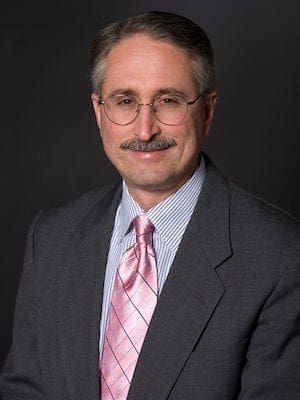AIN DARA, Lebanon–Ain Dara Baptist Church sits atop a mountain on a winding two-lane road from Beirut to Damascus, across the street from a Syrian army post. Across the valley are the “real” cedars of Lebanon, from which King Solomon likely secured timber for the building of the biblical temple in Jerusalem.
The Lebanese church once housed a school, but it was occupied by the Syrian army. The Israeli air force struck the church, destroying it and leaving dead Syrian soldiers littered around the property.
Between 1982 and 1992, during Lebanon’s long civil war, the church building was abandoned and presumed beyond repair.
But now, the dead stones of Ain Dara Baptist Church are living stones of hope in a land where calm but not peace resides.
The Baptist story of Ain Dara began in 1953, when Nabih Haddad converted at age 16 to evangelical Christianity from the Greek Orthodox faith of his family.
Sitting on his balcony under a massive shady grape vine with a cool mountain breeze, Haddad told EthicsDaily.com that he had been reading the Bible and attending house meetings when he took a stand that enraged some of the Greek Orthodox Christians in his village.
They attacked him for his conversion. His own father rejected his decision and supported his assailants.
“I said to my father that my life was in the Lord’s hand, not his hands,” said Haddad.
The violence against Haddad continued into the 1960s, when at one point even his brother tried to kill him.
In 1965, after Haddad had finished his university studies, the Orthodox villagers attacked a church meeting. They were “like wolves against sheep,” he said.
The assault sent several Christians to the hospital, including Haddad. At pistol point, Haddad’s father stopped the attack, perhaps saving his son’s life. Haddad’s recovery took six months.
Haddad, then a bi-vocational pastor, worked as an accountant for Middle East Airline in Beirut and commuted some 30 miles to the church.
In 1966, he started looking for a piece of property in his village, where most of the members are still Druzes, a sect of Islam.
A Druze family sold him land in 1967. They thought it was unusable because of its steep terrain.
Although the Baptist mission helped him purchase the property, the church was built by faith, “not American dollars,” Haddad said.
Church members did the construction work. Building materials were bought for less than asking price. The building was completed in 1971.
Haddad and his family live on one of the floors of the multistoried Ain Dara Baptist Church. Below the church are villas, vineyards and orchards. On the other side of the valley, three dark green forests of cedars are visible.
Haddad said that the people of Northern Lebanon “pretend” that the cedars for the temple in Jerusalem came from their land. If that were really true, the timber would have been shipped from Tripoli, not Sidon, as the Bible records. Since Sidon is closer to Ain Dara, he said it only makes sense that the cedars of Lebanon came from his region.
In addition to worship services, the church at one time sponsored a school with “obligatory” Bible study and chapel, Haddad said.
Despite the school’s evangelical approach, Druze, Orthodox and Maronite families sent their children to the school because of its high academic standards. At the school’s peak, some 400 students attended.
Because of the church’s strategic location, every faction wanted it when Lebanon’s bloody civil war began in 1975. The Druzes, Maronite Christians and Syrians saw the site as a controlling vantage point.
The Syrian army took control of the church in 1982, moving tanks and artillery into the compound.
“The people of Ain Dara thought that I was a spy for Syria, because I shouted against the Syrians and the Syrians did not shoot me,” said Haddad, describing his tirade against the soldiers.
On June 13, 1982, the Israelis bombed the church. Haddad recalled that “Syrian soldiers were dead everywhere.”
Before evacuating the building, the surviving Syrians looted what was left. They took doors, windows, desks and books. They dragged the central heating system down the stairs, leaving behind a trail of chipped steps visible today.
The soldiers also burned the books in the school library that they did not want.
Neither the Syrians nor Israelis could completely destroy Ain Dara Baptist Church, however.
With $26,000 from the Baptist mission, reconstruction started in 1992, and continues today.
Instead of restarting the school, the 75-member Ain Dara Baptist Church now offers its facilities as a conference center.
Conflict with the Orthodox Christians continues, although not at the same degree as in earlier years, said Haddad. “We know them. We go to their funerals and weddings. We give the poor food and clothing.”
Driving into the Lebanese mountains to visit the church, Haddad’s son, Toufic, said that “the Syrians, Palestinians and Israelis are fighting each other on our land.”
Noting Syria’s occupation of Lebanon, he said, “There is calm but no peace.”
If the Syrians leave Lebanon, however, “there will exist another problem,” he said. “The Christian Armenians are armed. Hezbollah is armed. Other Christian parties are armed. We must bring in the United Nations to assist the Lebanese army.”
A student at Arab Baptist Theological Seminary, Toufic Haddad told EthicsDaily.com about the emigration of Lebanese Christian youths to Australia, Canada and some to the United States.
In spite of the declining Christian population, Toufic, the church’s youth minister, shared his vision for reopening the school.
He said he needs to raise $180,000 to build a new facility on the church’s property.
Like his father, the younger Haddad has dreams for an authentic Christian witness in Ain Dara.
Robert Parham is executive editor of EthicsDaily.com.

